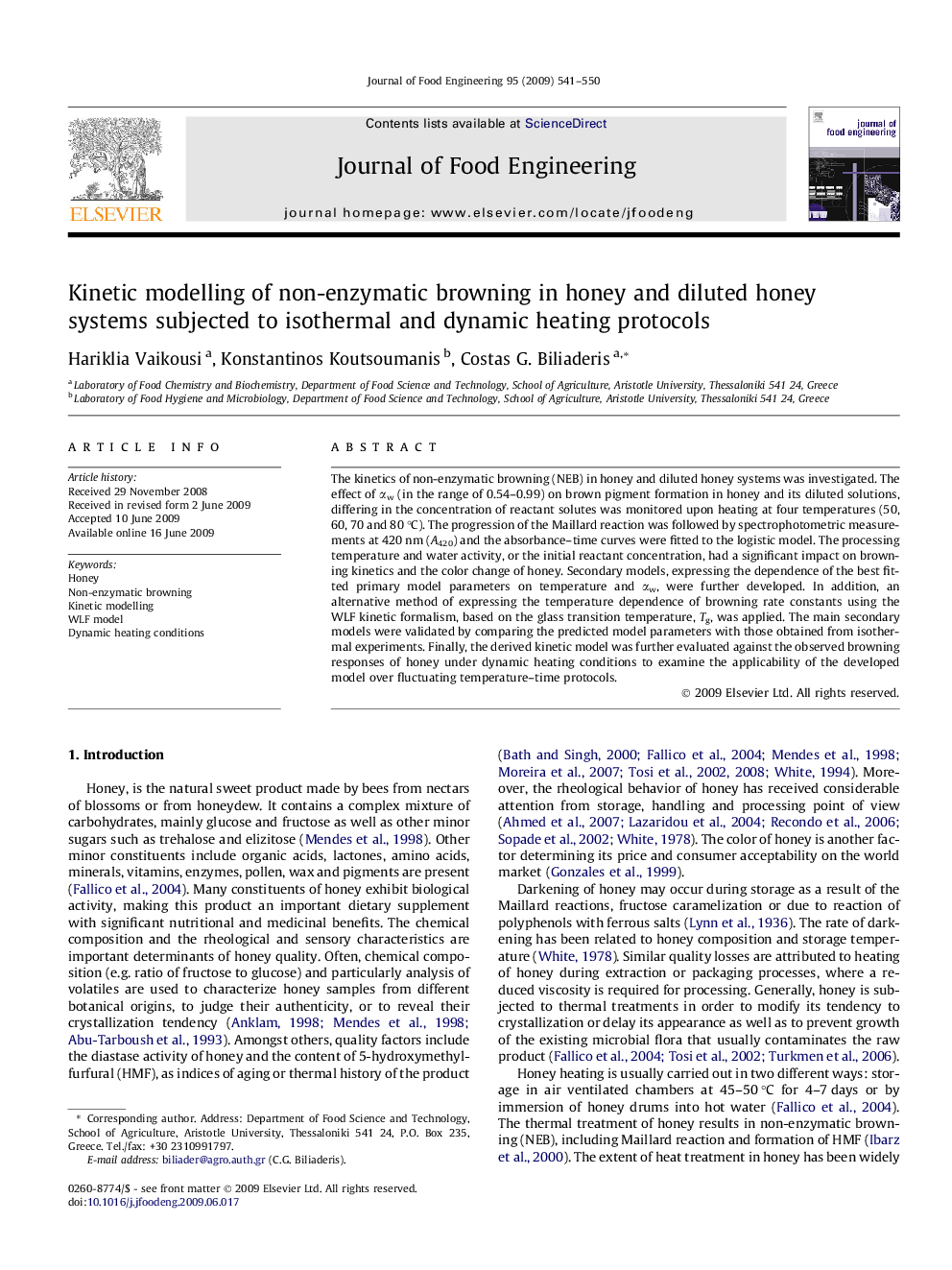| Article ID | Journal | Published Year | Pages | File Type |
|---|---|---|---|---|
| 224364 | Journal of Food Engineering | 2009 | 10 Pages |
The kinetics of non-enzymatic browning (NEB) in honey and diluted honey systems was investigated. The effect of αw (in the range of 0.54–0.99) on brown pigment formation in honey and its diluted solutions, differing in the concentration of reactant solutes was monitored upon heating at four temperatures (50, 60, 70 and 80 °C). The progression of the Maillard reaction was followed by spectrophotometric measurements at 420 nm (A420) and the absorbance–time curves were fitted to the logistic model. The processing temperature and water activity, or the initial reactant concentration, had a significant impact on browning kinetics and the color change of honey. Secondary models, expressing the dependence of the best fitted primary model parameters on temperature and αw, were further developed. In addition, an alternative method of expressing the temperature dependence of browning rate constants using the WLF kinetic formalism, based on the glass transition temperature, Tg, was applied. The main secondary models were validated by comparing the predicted model parameters with those obtained from isothermal experiments. Finally, the derived kinetic model was further evaluated against the observed browning responses of honey under dynamic heating conditions to examine the applicability of the developed model over fluctuating temperature–time protocols.
